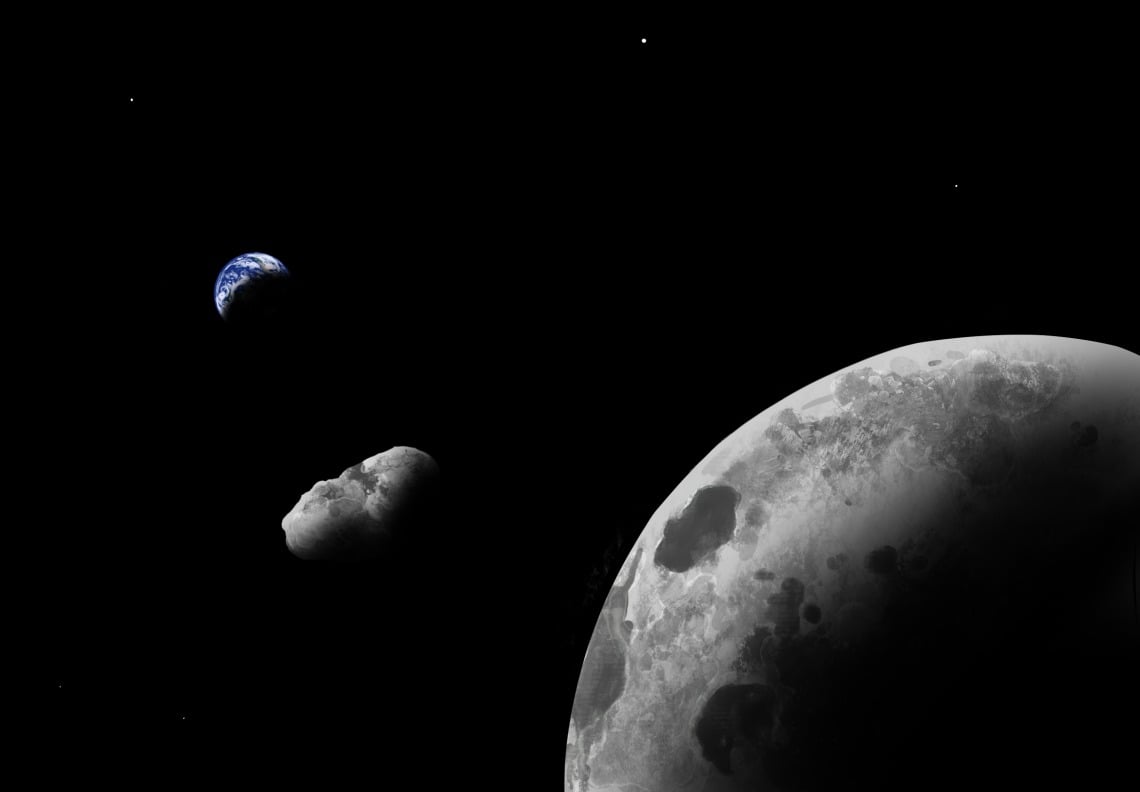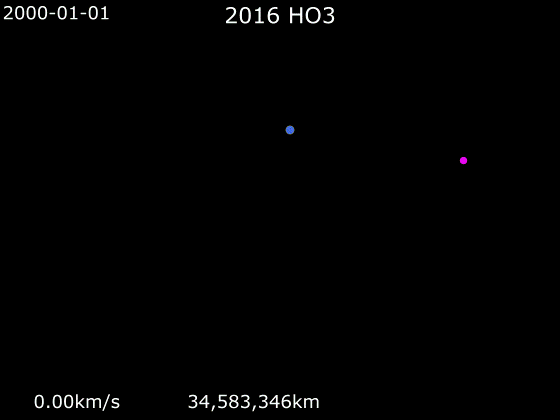
Kamo'oalewa) (also known as 2016-H03), a small asteroid that orbits the Sun alongside Earth has been known to science since 2016. However, the rock's origins have always remained a mystery to researchers. Now, new observations by University of Arizona (UA) astronomers indicate that the Ferris-wheel-sized space rock may be a piece of our Moon that broke off almost 500 million years ago!
"It's a kind of missing piece of the puzzle," says study co-lead Vishnu Reddy, a UA associate professor in cosmochemistry and planetary astronomy. "We have meteorites on the Earth, we have holes on the moon where some of those rocks came from, and this might be the piece in between."
Kamo'oalewa, which is estimated to be no more than 190 feet in diameter, is a quasi-satellite — a sub-category of near-Earth asteroids (NEAs) that orbit the Sun while remaining relatively close to Earth. The small, dim space rocks can only be viewed from very powerful telescopes and are extremely hard to study in detail. Observing Kamo'oalewa is even more challenging. Due to its orbit, the NEA can only be observed from Earth for a few weeks every April.

Study leader Ben Sharkey first began to suspect Kamo'oalewa's possible lunar origins in 2019. The UA graduate student had obtained detailed observations of the quasi-satellite using the Large Binocular Telescope on Mount Graham in southeastern Arizona. He noticed that the patterns of the reflected light on its surface were unlike any found on documented near-Earth objects. Instead, they matched the red reflectance spectrum of the lunar rocks collected during NASA's Apollo missions.
After mulling through various scenarios, Sharkey and Reddy concluded that the only plausible explanation was that Kamo'oalewa was a chunk of our Moon. However, the researchers wanted to confirm the stunning discovery before revealing it to the world. After missing their chance to observe the asteroid in 2020 due to a COVID-19 shutdown of the Large Binocular Telescope, the two were finally able to get the definitive evidence they needed in 2021.
"This spring, we got much-needed follow-up observations and went, 'Wow, it is real,'" Sharkey said. "It's easier to explain with the moon than other ideas."

The astronomers, who published their findings in the journal Communications Earth and Environment on November 11th, 2021, say Kamo'oalewa's orbit, which is similar to the Earth's, is another clue to its lunar origins.
"It is very unlikely that a garden-variety near-Earth asteroid would spontaneously move into a quasi-satellite orbit like Kamo'oalewa's," said Renu Malhotra, a UA planetary sciences professor, who helped with the study. "It will not remain in this particular orbit for very long, only about 300 years in the future, and we estimate that it arrived in this orbit about 500 years ago."
Sharkey and his team do not know what caused the chunk to break off from the Moon or how it ended up in its current orbit. However, they have discovered three other NEAs with similar orbital patterns leading them to suspect all the rocks broke off at the same time.
The only way to confirm Kamo'oalewa's origins and answer some of these questions is to obtain a sample of the asteroid. Fortunately for the researchers, that is exactly what China's ZhengHe mission, planned for launch in 2024, intends to do — stay tuned!
Resources: Livescience.com, news.arizona.edu
